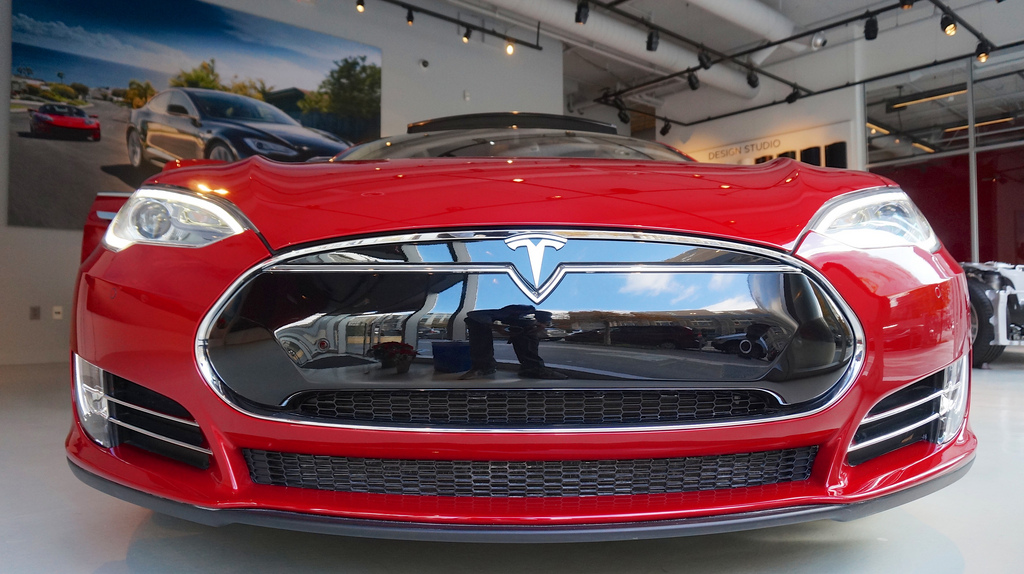If the electric vehicle (EV) industry can drive advances in battery energy density and drastically improve charging rates, as many as eight in every ten cars sold could be fully electric in ten years’ time, according to analyst Wood Mackenzie.
The U.S.-owned business intelligence firm said yesterday its base case scenario for EV adoption would see fully electric vehicles account for just 14% of sales in 2030, up from 3% last year.
However, WoodMac principal analyst Ram Chandrasekaran said that figure could rise to 30-40% if energy density and charging issues can be addressed, or even 70-80% if on-the-move charging makes strides in the next decade.
Energy density
Chandrasekaran said the Tesla Model 3 features “one of the most advanced battery packs in the automotive industry” with an energy density of 160 Wh/kg, ensuring the pack makes up around a quarter of the vehicle’s weight, at around 480kg. The WoodMac analyst predicted lithium-ion battery energy density will rise 25-35% by 2030, with the potential for alternative chemistries to supply further advances.
That would constitute half the battle as far as mass-market EV adoption was concerned, said the analyst, with a need to ramp up charging rates the other part of the equation.
The WoodMac analyst said direct current fast chargers typically charge at a rate of 50 kW at present, meaning they can supply 40 miles of range in around ten minutes. By comparison, home chargers operate at a rate of around 2.5 kW but petrol and diesel pumped at a gas station operates at an effective rate of around 20 MW.
Charging rate
To be able to supply the 200-mile range the WoodMac analyst says would be required to support long journeys in ten minutes would call for the charging rate to rise to around 300 kW and for a network of such facilities to be installed along highways worldwide. That prediction, though, ignores the fact the vast majority of private car journey round trips account for less than 40 miles.
WoodMac’s Chandrasekaran described the development of dynamic electric vehicle charging as a potential “game-changer” for EV adoption, given a raised ability for cars to charge while in motion would further reduce battery pack weight and address range anxiety.
The analyst’s base case scenario predicted EVs will drive 69% of global lithium demand by 2030 and 49% of cobalt consumption, even without the innovations necessary to catapult electric vehicles into being the technology of choice by that stage. According to the analyst, business-as-usual will see full hybrids supply 4-9% of vehicles sold in ten years’ time although conventional, fossil-fuel-burning cars will still dominate, with 66% of the market, down from 79% last year.
Raw material sourcing
This content is protected by copyright and may not be reused. If you want to cooperate with us and would like to reuse some of our content, please contact: editors@pv-magazine.com.




EVs are growing now at rates that confound the predictions of conservative consultants.(https://cleantechnica.com/2020/02/07/fossil-fuel-vehicles-plummet-40-in-sweden-as-evs-triple-to-over-30-market-share/)
In January 2020 (January 2019 in brackets), EV market shares (BEVs plus PHEVs) in the three biggest European markets were
UK 5.9% (2.2%)
France 11% (2.7%)
Germany 6.5% (2.5%)
Penetrations were much higher in several smaller countries, notably Norway, Sweden and the Netherlands.
“Range anxiety” is mostly just that: an irrational fear born of ignorance. The owners of current Tesla 3s and Zoes are perfectly happy with their ranges, as the longer fuelling stops on occasional long trips are outweighed by the convenience of overnight slow charging at home.
The fast charger network is growing fast. 50 KW is not the state of the art for fast chargers. Ionity are rolling out 150KW CCS chargers in Europe, and Tesla is starting to instal 250 KW ones.
Thanks for beating me to it James. The article read like a list of fears that hasn’t been true for 5 years.
Sounds like the author of this piece has never owned an EV, or, perhaps works for Exxon??
Charging of my Model 3 is too fast. I hardly have time for a coffee before the car is charged.
I have driven my 3 for 500 kms on one charge, only because I had to, not because I wanted to. Since then Tesla has installed fast chargers across Canada so x-country trips can be made without difficulty.
Studies have shown that my car is less expensive than a Toyota Camry or Honda Accord. Due to the ignorance this author demonstrates people are still buying the more expensive Honda’s and Toyota’s. Go figure??
Hi Bob, As the author of the article you are correct in guessing that I have never owned an EV – I don’t own any form of personal transport as I prefer the freedom (not least financial) walking and using public transport offers me. The spec mentioned about the Tesla Model 3 is based on the opinion expressed by the WoodMac specialist quoted rather than personal experience so in that respect you are correct to highlight my ignorance, although I think blaming me for the continued sale of petrol cars is a little unfair given how I tirelessly campaign to get my peer group not to fly and to switch over to electric vehicles. On one final point, I am happy to confirm I have never worked for Exxon.